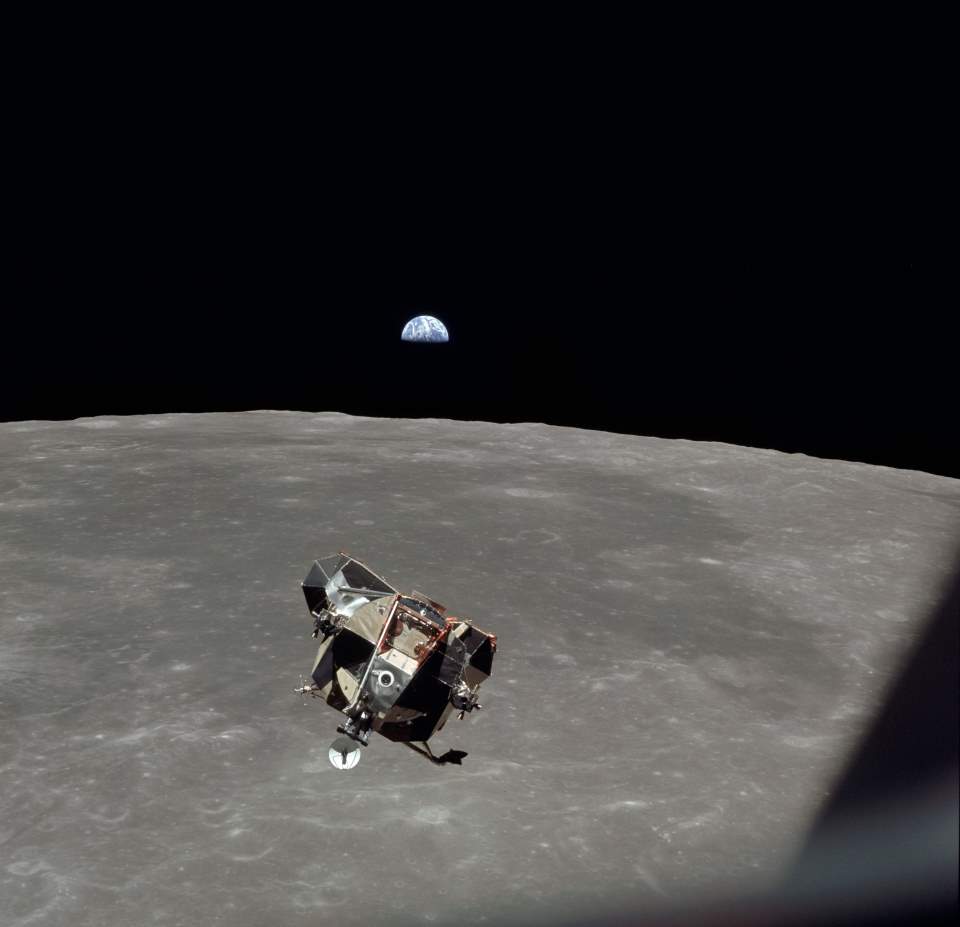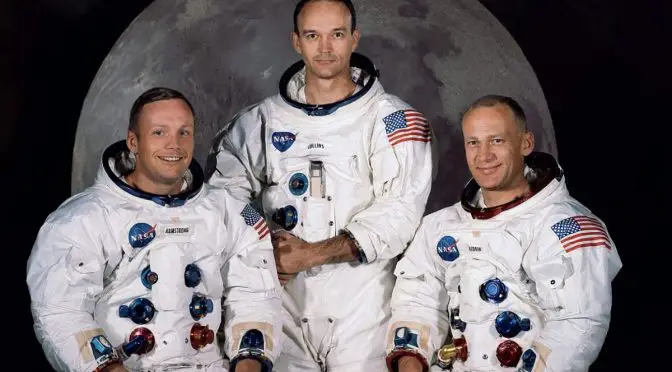On April 28, 2021, Michael Collins, Apollo 11 pilot and the “loneliest man ever” died aged 90. Collins flew the Apollo 11 command module Columbia around the Moon in 1969 while his crewmates, Neil Armstrong and Buzz Aldrin, performed the first crewed landing in history on the lunar surface.
Michael Collins
Michael Collins (October 31, 1930 – April 28, 2021) was the Command Module Pilot (see notes 1) for Apollo 11, the spaceflight that landed the first two people on the Moon. While he stayed in orbit around the Moon, Neil Armstrong and Buzz Aldrin left in the lunar module to make the first crewed landing on the Moon’s surface.
It was his second and last spaceflight. His first spaceflight was on Gemini 10, in which he and Command Pilot John Young performed orbital rendezvous with two different spacecraft and undertook two extravehicular activities (EVAs, also known as spacewalks).

Prior to becoming an astronaut, he graduated from the United States Military Academy, and from there he joined the United States Air Force and flew F-86 Sabre fighters at Chambley-Bussieres Air Base. He was accepted to the U.S. Air Force Experimental Flight Test Pilot School at Edwards Air Force Base in 1960. He unsuccessfully applied for the second astronaut group but was accepted for the third.
After retiring from NASA in 1970, Michael Collins took a job in the Department of State as Assistant Secretary of State for Public Affairs. A year later, he became the director of the National Air and Space Museum and held this position until 1978, when he stepped down to become undersecretary of the Smithsonian Institution. In 1980, he took a job as vice president of LTV Aerospace.
Collins resigned in 1985 to start his own consulting firm.
On April 28, 2021, Collins died from cancer in Naples, Florida, at the age of 90.
The “loneliest man ever”
On July 21, 1969, Michael Collins photographed the Apollo 11 Lunar Module ascent stage from the Command Module with a Half-Earth is above the moon‘s horizon.
All the living humans at the time were in that amazing photo, on Earth, and in the ascent module of Apollo 11. Only Michael Collins himself wasn’t in that photo, hence he earned the “loneliest man ever” title.

Statements on Passing of Michael Collins
The following is a statement from acting NASA Administrator Steve Jurczyk on the passing of Michael Collins:
“Today the nation lost a true pioneer and lifelong advocate for exploration in astronaut Michael Collins. As pilot of the Apollo 11 command module – some called him ‘the loneliest man in history’ – while his colleagues walked on the Moon for the first time, he helped our nation achieve a defining milestone. He also distinguished himself in the Gemini Program and as an Air Force pilot.
“Michael remained a tireless promoter of space. ‘Exploration is not a choice, really, it’s an imperative,’ he said. Intensely thoughtful about his experience in orbit, he added, ‘What would be worth recording is what kind of civilization we Earthlings created and whether or not we ventured out into other parts of the galaxy.’
“His own signature accomplishments, his writings about his experiences, and his leadership of the National Air and Space Museum helped gain wide exposure for the work of all the men and women who have helped our nation push itself to greatness in aviation and space. There is no doubt he inspired a new generation of scientists, engineers, test pilots, and astronauts.
“NASA mourns the loss of this accomplished pilot and astronaut, a friend of all who seeks to push the envelope of human potential. Whether his work was behind the scenes or on full view, his legacy will always be as one of the leaders who took America’s first steps into the cosmos. And his spirit will go with us as we venture toward farther horizons.”
The following is a statement from the Collins family:
“We regret to share that our beloved father and grandfather passed away today, after a valiant battle with cancer. He spent his final days peacefully, with his family by his side. Mike always faced the challenges of life with grace and humility, and faced this, his final challenge, in the same way.”
“We will miss him terribly. Yet we also know how lucky Mike felt to have lived the life he did. We will honor his wish for us to celebrate, not mourn, that life. Please join us in fondly and joyfully remembering his sharp wit, his quiet sense of purpose, and his wise perspective, gained both from looking back at Earth from the vantage of space and gazing across calm waters from the deck of his fishing boat.”

Notes
- The Apollo spacecraft had three parts: a command module (CM) with a cabin for the three astronauts, and the only part that returned to Earth; a service module (SM), which supported the command module with propulsion, electrical power, oxygen, and water; and a lunar module (LM) that had two stages – a descent stage for landing on the Moon, and an ascent stage to place the astronauts back into lunar orbit.
Sources
- “Statements on Passing of Michael Collins” on the NASA website
- Michael Collins on Wikipedia
- Michael Collins on the NASA website
- Space Shuttle Endeavour’s Touchdown Meets Columbia’s Salute [An amazing photo from the past] - February 29, 2024
- Moon Landings: All-Time List [1966-2024] - February 23, 2024
- From Orbit to Ordinary: 10 Earthly Applications of Space Technology - January 23, 2024


